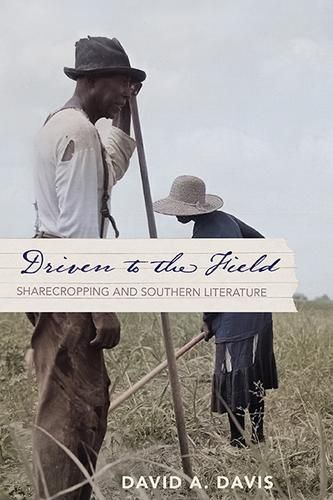Readings Newsletter
Become a Readings Member to make your shopping experience even easier.
Sign in or sign up for free!
You’re not far away from qualifying for FREE standard shipping within Australia
You’ve qualified for FREE standard shipping within Australia
The cart is loading…






Driven to the Field traces the culture of sharecropping-crucial to understanding life in the southern United States-from Emancipation to the twenty-first century. By reading dozens of works of literature in their historical context, David A. Davis demonstrates how sharecropping emerged, endured for a century, and continues to resonate in American culture. Following the end of slavery, sharecropping initially served as an expedient solution to a practical problem, but it quickly developed into an entrenched power structure situated between slavery and freedom that exploited the labor of Blacks and poor whites to produce agricultural commodities.
Sharecropping was the economic linchpin in the South's social structure, and the region's political system, race relations, and cultural practices were inextricably linked with this peculiar form of tenant farming from the end of the Civil War through the civil rights movement. Driven to the Field analyzes literary portrayals of this system to explain how it defined the culture of the South, revealing multiple genres of literature that depicted sharecropping, such as cotton romances, agricultural uplift novels, proletarian sharecropper fiction, and sharecropper autobiographies-important works of American literature that have never before been evaluated and discussed in their proper context.
$9.00 standard shipping within Australia
FREE standard shipping within Australia for orders over $100.00
Express & International shipping calculated at checkout
Driven to the Field traces the culture of sharecropping-crucial to understanding life in the southern United States-from Emancipation to the twenty-first century. By reading dozens of works of literature in their historical context, David A. Davis demonstrates how sharecropping emerged, endured for a century, and continues to resonate in American culture. Following the end of slavery, sharecropping initially served as an expedient solution to a practical problem, but it quickly developed into an entrenched power structure situated between slavery and freedom that exploited the labor of Blacks and poor whites to produce agricultural commodities.
Sharecropping was the economic linchpin in the South's social structure, and the region's political system, race relations, and cultural practices were inextricably linked with this peculiar form of tenant farming from the end of the Civil War through the civil rights movement. Driven to the Field analyzes literary portrayals of this system to explain how it defined the culture of the South, revealing multiple genres of literature that depicted sharecropping, such as cotton romances, agricultural uplift novels, proletarian sharecropper fiction, and sharecropper autobiographies-important works of American literature that have never before been evaluated and discussed in their proper context.